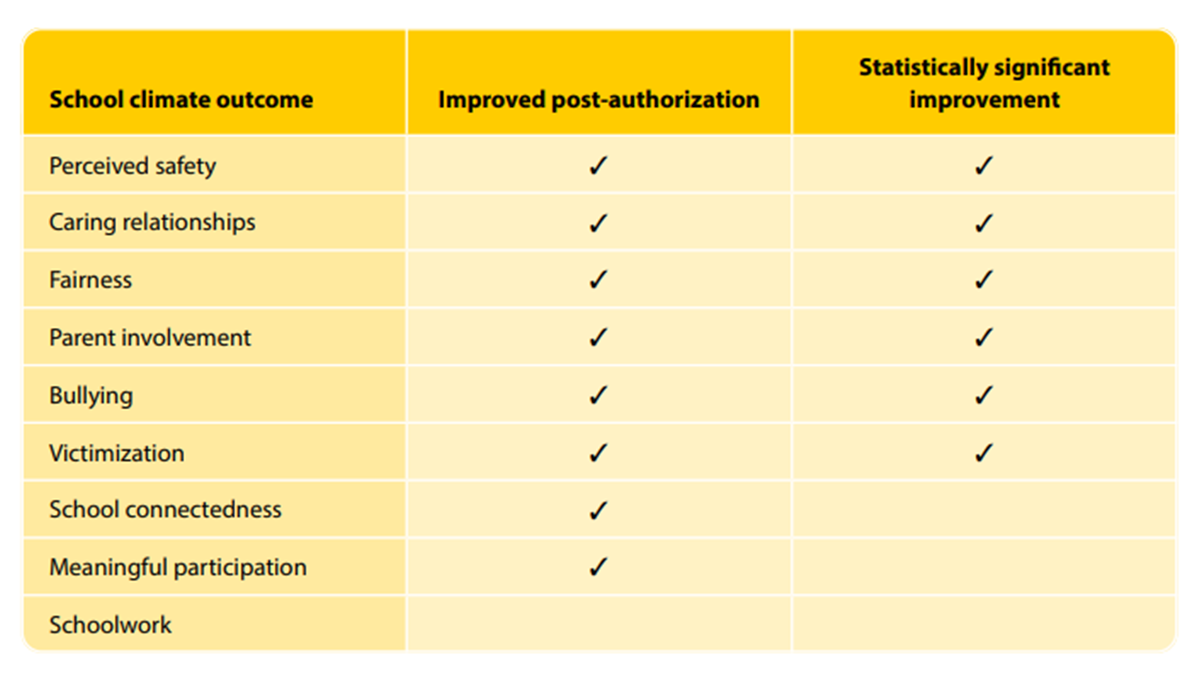What impact can the Primary Years Programme (PYP) have beyond curriculum into the school’s climate and community building efforts? The IB’s Research team found that student’s caring relationships, parent involvement and perceptions of safety all showed statistically significant improvements after implementing the PYP. See more outcomes of the research below.

The International Baccalaureate (IB) Primary Years Programme (PYP) is a school-wide curriculum framework for children aged 3 to 12 and is taught in over 109 countries. This study examined the PYP’s impact on school climate within public elementary schools in California. School climate refers to the ways in which a school fosters safety, promotes a supportive academic, disciplinary and physical environment as well as encourages and maintains respectful, trusting and caring relationships throughout the school community (National Center on Safe Supportive Learning Environments, 2019).
To address these questions, researchers used a combination of qualitative and quantitative techniques. Qualitative analyses relied on interview and focus group data from eight case study sites across the state of California. Quantitative analyses relied on 16 years of student California Healthy Kids Survey (CHKS) data collected from public elementary schools in California.
Improvements to school climate
The qualitative data revealed numerous improvements to school climate and participants at all or most of the case study schools attributed these changes to the PYP. Participants at every school reported increased focus on social and emotional learning (SEL) and the whole child, use of transdisciplinary instruction as well as teacher collaboration because of the PYP. Further, participants from at least three-quarters of case study schools attributed the following improvements to the PYP:
- Student agency and ownership over learning
- Student action and community service
- Student engagement
- Student learning for life
- Student voice
- Global perspectives
- Increased use of inquiry
- Open-mindedness
- Individualization in instruction
- Celebration of diverse student accomplishments
- Teacher creativity and sense of safety to take risks
- Teacher engagement
- Teacher reflection
- Teacher relationships
- Parent involvement
- Parent belief that their children are set up for success
Changes to school climate following PYP authorization
Findings from the quantitative analyses showed small but statistically significant changes post-authorization at the PYP schools in six out of the nine school climate outcomes assessed using the CHKS (see Table 1).

Recommendations for practice
Case study results highlight the importance of leader and teacher buy-in to ensure strong PYP implementation and to realize potential positive impacts on school climate. Professional development addressing school climate, focusing on the IB learner profile and support in integrating the PYP with existing programming and resources on school campuses may be valuable to support further school climate development. Annual use of school climate surveys can also be a helpful tool to determine the current state of school climate and areas for improvement moving forward.
To learn more about this study, please read the research summary or the full report. All research reports on IB programmes are available on the IB Research webpages. You can also contact us for more information.
If you enjoyed this story, consider reading more below:



